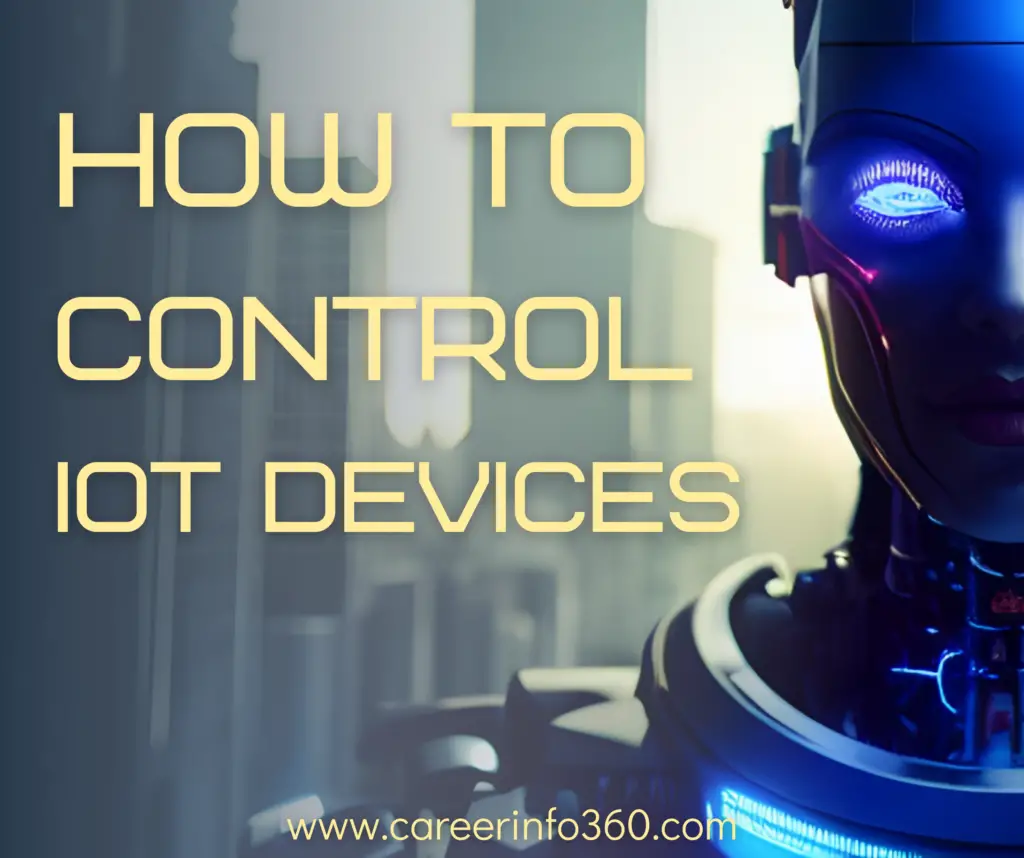How to Control IOT Devices:
In modern life, controlling IOT devices has become essential in our tech-savvy world. The way we connect with our surroundings has been changed by these gadgets, from smart thermostats to security cameras. How to Control IOT Devices However, diving into the realm of the IOT sector brings up several crucial issues. The questions include: Do IOT devices have firewalls? What are the top two issues with IOT devices? What ports do these devices use, and how does IOT remote monitoring work?

Furthermore, how can IOT devices be remotely updated? And what exactly is the role of the Raspberry Pi in this interconnected world? Last but not least, are you familiar with the mysterious IOT hidden menu? Let’s start our exploration by understanding the very basic foundation of IOT devices, and then we will address these intriguing questions. So just start learning.
IoT Device Basics And How to Control IOT Devices
IoT devices, also known as internet of things devices, are commonplace items that have connectivity, sensors, and software built in to enable data collection and exchange over the internet. These devices enhance our convenience, security, and comfort. But are firewalls included with them?
Firewalls in IoT Devices
Firewalls are basically used for device protection from online attacks. It checks the malicious activity in the network traffic blocks the activity, and secures the system. IoT devices may differ in terms of their security characteristics from traditional computer devices in that the former frequently have strong firewalls. It’s essential to look at every device’s characteristics to see if a firewall is there. However, keep in mind that not all IoT devices are created equal, and some may lack this essential security measure.
Concerns with IoT Devices And How to Control IOT Devices
Let us now explore the two main issues concerning IoT devices. Data security and privacy should come first. IoT devices collect vast amounts of data, ranging from personal information to sensor data. This can be valuable and sensitive, and if this information falls into the wrong hands, it might have disastrous results. Including identity theft or unauthorized access to your home or business. Manufacturers and users alike must take proactive actions to protect this data, such as implementing encryption and strong access controls.
Second, there is the issue of device vulnerability. Because many IoT devices do not get regular security upgrades, they could be vulnerable to hacking and other online dangers. The rapid pace of technological advancement often means that devices become obsolete before manufacturers can address all security vulnerabilities. To mitigate this concern, manufacturers should prioritize security in the design and development of IoT devices, and users must keep their devices up-to-date whenever possible.
Ports used by IoT Devices
For network configuration and troubleshooting, it is essential to understand the ports that IoT devices use. Different devices may communicate through different ports. If you want to know which precise ports your IoT device needs, you must check the device documentation or the manufacturer’s website.
IoT devices often communicate using standard network protocols, such as:

- HTTP
- HTTPS
- MQTT
- CoAP
For example:
- HTTP typically uses port 80
- HTTPS uses port 443
- MQTT uses port 1883
- CoAP uses port 5683
Knowing which protocols and ports your device uses can help you set up your network and firewall rules effectively.
IoT Remote Monitoring
IoT remote monitoring is a game changer. It allows you to keep an eye on your device and data from virtually anywhere. By connecting your devices to the internet, you can access real-time information, receive alerts, and even control your IoT devices remotely.
For security and functionality, its critical to keep your IoT devices up-to-date without requiring physical access Remote updates let manufacturers update, fix security flaws, and enhance device performance. However, in order to ensure a seamless update process, it is crucial to adhere to recommended practices.
The Raspberry PI’s role in IoT
A key component of the IoT ecosystem is the flexible single board computer known as the Raspberry Pi.it can serve as a hub for IoT devices allowing them to connect with one another and the internet. It appeals to IoT aficionados because of it inexpensive price compact physical size and strong community support.
The raspberry serves various roles:
- IoT Endpoint
Connect to sensors and collect data. Like you can use it to measure temperature, motion and send that data to the cloud for analysis and visualizations.
- IoT Gateway
May Not have direct internet connectivity. Here raspberry pi can act as an intermediary routing data from these devices to cloud.
- IoT Controller
It can control other IoT devices in your network. Like it can programmed to turn on lights adjust thermostat setting or trigger security alarms based on predefined conditions.
Is Raspberry Pi an IoT Device?
It is considering as an IoT device but its role can vary. It can serve as an IoT endpoint which collect data from sensor and transmitting it as a cloud. It can also act as a gateway or controller, orchestrating the actions of other IoT devices in a network.
The versatility of the raspberry pi makes it a popular choice for DIY IoT projects and prototyping. Whether you are building a home automation system or a weather station it provide a flexible platform for experimentation and development.
Exploring the IoT hidden menu
Less known aspect of IoT device is IoT hidden menu. This menu contains advanced setting and options that are not readily accessible in the devices standard interface. Accessing the hidden menu often involves specific key combination or commands.
For example; in some smart Tv pressing a sequence of buttons on the remote control can unlock the hidden menu, allowing you to access advanced display setting. However, be caution before exploring the hidden menu as making incorrect changes can affect the devices functionality.
Summary of How to Control IOT Devices:
In conclusion making IoT device control involves understanding their security features major concerns communication ports remote monitoring and updates. The raspberry pi adds an extra layer of versatility to your IoT setup. Exploring the hidden menu can unlock hidden potential. As you navigate the world of IoT keep these insights in the mind to make the most of your interconnected devices. Whether you are a seasoned IoT enthusiast or just getting started the world of IoT is ripe with possibilities for innovation and automation. Embrace it experiment it and enjoy the convenience it brings to your life.
Learn How To Get Best Job In IOT
And learn more about IOT from here



Information is clear and easy to understand recommended.